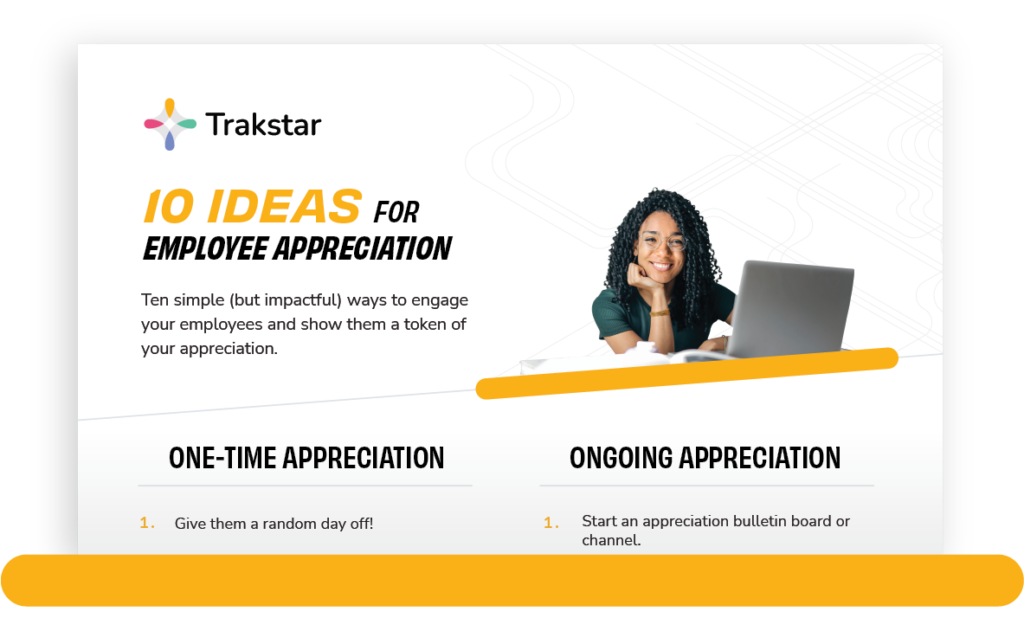What is Quiet Quitting?
Posted by Trakstar • August 18, 2022 (Last modified October 12, 2022) • 7 min read
It’s all over TikTok, Twitter, and even LinkedIn right now: Quiet Quitting. This trend is something that many HR leaders have been talking about for as long as there have been HR leaders, but now that it officially has a name, we need to pay even more attention than we did before.
Quiet quitting isn’t just a viral trend that’s happening now; it has been happening for a long time. We’ve called it many other names, including disengagement, burnout, settling in, leveling out, and many more. This trend should concern everyone with goals to reach and employees to handle, but maybe not for the reasons you’d think.
Quiet quitting is a problem, but the more significant issue is what’s behind it and why some of our best employees, the highest achievers, are starting to do it en masse.
Quiet Quitting Definition
Quiet quitting is something seen primarily in high-achieving, overperforming workers. They’re pulling back to establish work-life boundaries and balance, help reduce stress, and quell burnout while still performing the essential duties of their jobs. They aren’t “quitting” their jobs. They are still doing what is outlined in their job descriptions; they aren’t going above and beyond.
With over 4 million views on TikTok right now, many people are realizing they’re managing quiet quitters, working with them, or even on the verge of quiet quitting themselves. The idea behind it all isn’t necessarily a bad thing. Workers want to find more balance and stop bending over backward for their employers. In return, they have more time with family and friends, have better mental health, and physically feel better. They’re still doing what they are paid for, but not much more.
Still, quiet quitting is something that HR leaders need to pay attention to because it is a symptom of a more significant organizational and cultural problem.
Quiet Quitting Can Impact Mental Health in Our Highest Performers
Many workers will keep pushing forward to reach their goals and outperform their KPIs despite their mental health. Glassdoor has found that almost 50% of workers believe that they have a poor work-life balance. They are missing out on key moments in their lives or not being fully present because they are focused on work. This is an even greater problem for women, particularly mothers, and people who work remotely.
Overworking can lead to a deterioration of mental health. However, Quiet Quitting can also harm their mental health, so we need to pay attention as employees quiet quit as well. Why? So many people, particularly millennials and Gen X, measure their self-worth based on their productivity and professional results.
When our best performers (who are most likely to connect their worth to their careers) stop getting the accolades, achievements, and promotions they once got, they may question their worth in the workplace. This can lead to churn, low self-esteem, and cyclical overwork and burnout.
Quiet Quitting is Another Symptom of Burnout
For a while now, we’ve been talking a lot about burnout – we’ve done a webinar on it – and in 2019, the World Health Organization recognized burnout as an occupational phenomenon. Many workers will hit burnout, and it’s a massive risk for employers who could lose their best employees due to physical, emotional, and mental health impacts.
It’s not enough to suggest mental health care or taking breaks. We have to encourage it and model that kind of behavior ourselves. Quiet quitting is a symptom of burnout that we can identify, and we should – and then we need to take action by showing appreciation, checking in the employee, lightening their load where possible, and encouraging PTO (if possible).
How to Prevent Quiet Quitting
Worried that your best performers are quiet quitting – or about to? There are a few things you can do:
Keep Them Engaged
Engaged employees are less likely to quiet quit. People still need to love their jobs and feel their work is valuable. It’s an ongoing struggle to keep your employees engaged, but there are a few different approaches you can take. Things like team building, fun events, and even bonuses can all spike engagement in the short term.
However, the best place to start is simple: use an engagement survey. Engagement surveys allow you to ask questions to your workforce and get their answers in one place. Employees feel comfortable with engagement surveys because they can type out their feelings and know that other employees are saying the same things.
Use surveys to ask how people feel at work, what benefits would make them happier, and so much more. You can even ask fun questions and then report back to your workforce!
Just remember that you need to take action after your engagement surveys.
Encourage Better Coworker Relationships
People who are happier with their coworkers and look at each other as friends are less likely to feel burnout and quiet quit. Happier employees are more productive and more likely to stay engaged, even during stressful times. Most importantly, happier employees who like their coworkers will likely remain healthy.
Encourage managers to have open, communicative relationships with the employees under them. Have them work at fostering good relationships so that when someone is feeling stressed, they are likely to express their feelings and reach out for help when needed. This relationship can also help managers identify workers who are showing the signs of quiet quitting.
Hire & Train Managers
Often, company success starts at the top and works its way down. Anyone with a managerial title and position must be trained in soft skills, empathy, and managing people. They need to be prepared to handle situations when someone is facing burnout and when high performers decide to take a small step back. They also need to build teams where everyone works together to move your organization forward.
Managers need to be open and honest with their employees, and they need to know them, if at all possible. Weekly check-ins, group chats, and paying attention can help managers understand their workforce.
These are just a few things you can do to stop quiet quitting. It’s about monitoring your company’s culture and paying attention to top performers.
Could Quiet Quitting Be A Good Thing?
There’s a lot of debate amongst HR leaders whether or not quiet quitting is a wholly bad thing. Truthfully, some good things can come out of it. It might not seem good in the short term, but in the long run, it could lead to a healthier workplace where wellness is a focus, not just something we talk about and then ignore.
For remote workers who have trouble separating work and home life, quiet quitting could save relationships and important connections and encourage someone to be active in their own lives. Every Wednesday on social media, we share tips on maintaining work-life balance while working in a remote environment – forward a few of those videos to your struggling employees.
Worried About Quiet Quitting and Retention?
Quiet quitting could be a response to the Great Resignation or a sign that your workforce is changing. People are starting to value their time and reject burnout and working longer hours. This doesn’t necessarily mean something bad for your workplace, but it could mean a shift in attitudes surrounding attracting, retaining, engaging, and understanding your workforce.
Don’t be overly concerned about quiet quitting right now. The current workforce is one of the brightest, hardest working workforces. You should be concerned about the culture you’re creating and how you interact with your employees. The Trakstar platform is built to encourage your top talent while keeping engagement rates high. Through applicant tracking to ensure you get the best talent to performance check-ins that ensure they’re still happy, and a learning management system to ensure everyone is trained, our platform helps you keep your workforce happy and healthy. We now have benchmarking to see how your retention rates compare to some of your industry and company-size peers.
Don't Miss Out on More Great HR Articles!
Subscribe to get the latest, greatest HR and Talent Development content straight to your inbox.



